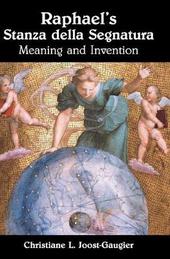
|
Raphael's Stanza della Segnatura: Meaning and Invention
Hardback
Main Details
| Title |
Raphael's Stanza della Segnatura: Meaning and Invention
|
| Authors and Contributors |
By (author) Christiane L. Joost-Gaugier
|
| Physical Properties |
| Format:Hardback | | Pages:284 | | Dimensions(mm): Height 254,Width 180 |
|
| Category/Genre | Painting and paintings
Individual artists and art monographs |
|---|
| ISBN/Barcode |
9780521809238
|
| Classifications | Dewey:759.5 |
|---|
| Audience | | Professional & Vocational | |
|---|
| Illustrations |
12 Plates, color; 29 Halftones, unspecified; 4 Line drawings, unspecified
|
|
Publishing Details |
| Publisher |
Cambridge University Press
|
| Imprint |
Cambridge University Press
|
| Publication Date |
6 May 2002 |
| Publication Country |
United Kingdom
|
Description
Raphael was the preeminent painter of Renaissance Rome, whose classical style marks some of the most enduring masterpieces of Italian Renaissance art. Of these, the Stanza della Segnatura in the Vatican Palace has often been considered the most aesthetically perfect. Executed between 1508 and 1511 for the notoriously temperamental, but adventurous, patron of the arts, Pope Julius II, it was the commission that propelled Raphael, then a young man, into international prominence. The work consists of a chamber with a painted ceiling, a pavement of inlaid marble, and four frescoed walls, all orchestrated with a cast of famous historical figures who exemplify the various disciplines of learning. Joost-Gaugier's study is the first to examine the elements of the Stanza della Segnatura as an ensemble. The volume focuses on the meaning of the frescoes and accompanying decoration in light of recent studies into the intellectual world of High Renaissance Rome.
Reviews"This book serves to shed new light on a well-known masterpiece and will be appreciated by all lovers of Renaissance art and history." Religious Studies Review "...a profound and impressively articulate analysis..." Renaissance Quarterly "Christiane L. Joost-Gaugier opens her discussion... with the bold asserion that "the Stanza della Segnatura belongs as much to the history of ideas as to the history of art", an assumption she goes on to explore through a painstaking examination of the imagery from Julius II's private library." Sixteenth Century Journal
|